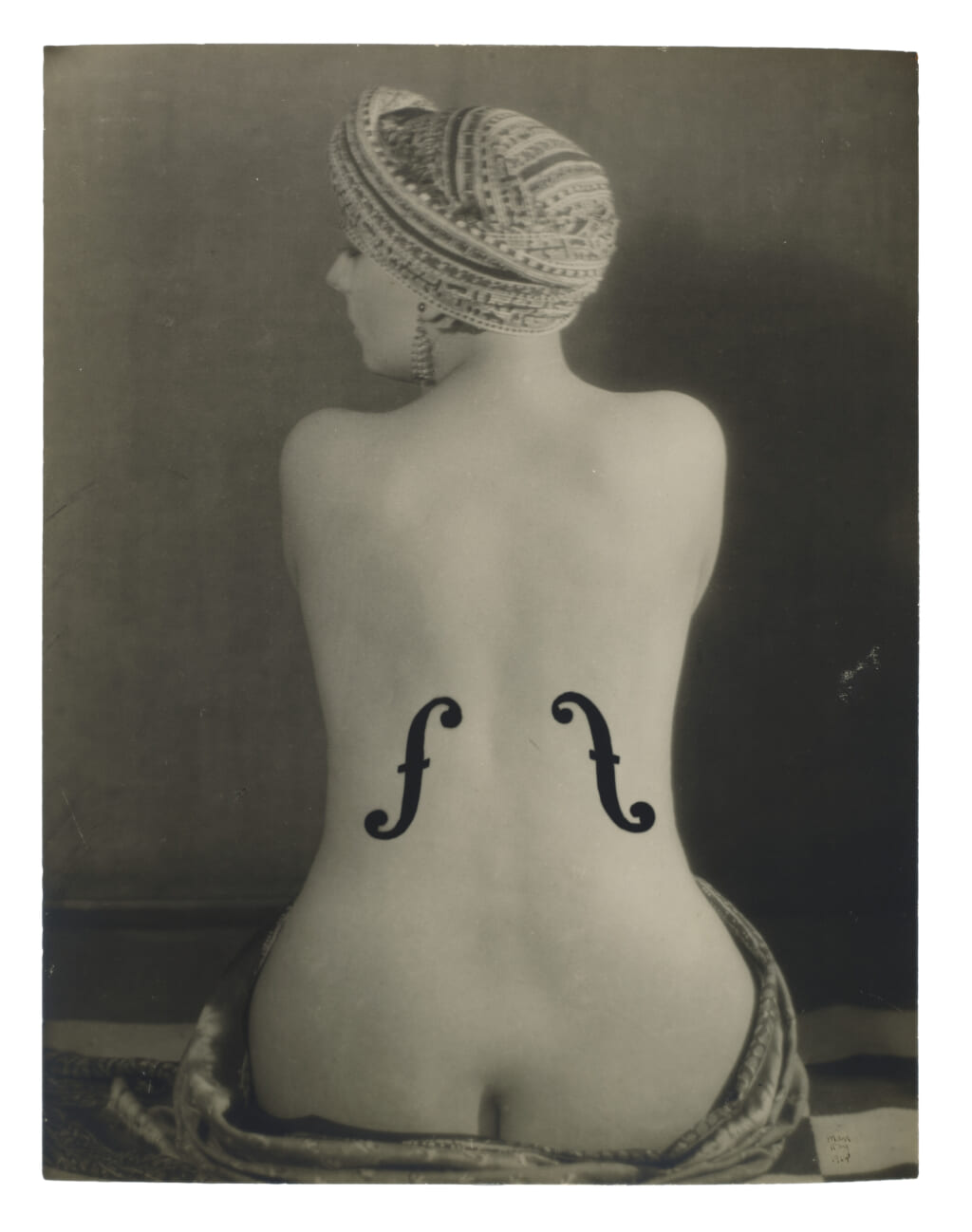This Iconic Photo Of A Naked Woman Could Become The Most Expensive Ever Sold
With an estimated value of at least $5 million, “Le Violon d’Ingres” by artist Man Ray depicts a famous French muse.

This spring, collectors can grab pieces of art history at The Surrealist World of Rosalind Gersten Jacobs & Melvin Jacobs, an auction from the estate of American retail royalty Rosalind Gersten Jacobs that spans paintings, photography, jewelry, posters, and ephemera. The sale goes down at Christie’s Rockefeller Center Galleries this May after completing a tour through London, Paris, and Hong Kong.
The hottest lot to hit the auction block will be Le Violon d’Ingres, an iconic 1924 photograph taken by Dada artist Man Ray. With a retail value estimated to be at least $5 million, Le Violon d’Ingres might become the most expensive single photograph sold in all of auction history, according to a release from Christie’s.
Ray’s photo depicts Kiki de Montparnasse, French chanteuse and muse to the 20th century masters. The artist overlaid “f holes” from a violin on Montparnasse’s sloping back to highlight the sensual beauty shared by string instruments and the female figure. Darius Himes, Christie’s International Head of Photographs, remarks, “This beguiling Surrealist image is the result of a unique and hand-manipulated darkroom process.”
Born in Philly in 1890, Man Ray moved from NYC to Paris in the 1920s, where he’d spend most of his life. Art history remembers Man Ray for his contributions to Surrealism and Dadaism—two movements that responded to the traumas of WWI with benign creative chaos. Man Ray also prevails through his technical innovations.
Although a painter first and foremost, he invented the “rayogram,” a method of capturing images with photograms and solarization, which Ray discovered alongside photographer, model and muse Lee Miller. His experimental film, Le Retour à la raison (1923) became the first cine-rayograph, made without using a camera.
“While reproduced countless times and having seeped into the popular consciousness, the artist held onto this work, the original, until 1962 when the Jacobs became its custodian,” Himes adds of Le Violin d’Ingres.
“The reach and influence of the image, at once romantic, mysterious, roguish, and playful, has captured the minds of all for nearly 100 years. As a photographic work, it is unprecedented in the marketplace. We are proud to handle it.”
Rosalind Gersten Jacobs became acquainted with the Surrealists in 1954 through Norma and William Copely, who introduced her to Man Ray. “This fateful meeting would mark not only the beginning of Rosalind’s lifelong journey of collecting, but it would chart her on a new path of artistic discovery, and launch a number of close-knit friendships with artists including Marcel Duchamp, René Magritte, Max Ernst, Dorothea Tanning, and more,” Christie’s explains.
We tend to think of art history like the weather–something with its own freewill. In truth, artists, writers, gallerists, collectors and more create art history through conversations, arguments, jokes, and even accidents. Christie’s notes that many pieces throughout this auction “were created from moments of spontaneous inspiration and creative collaboration, truly embodying the spirit of the Dada and Surrealist movements.”
They cite one story about Duchamps’ Feuille de vigne femelle—“Female Vine Leaf”—which Jacobs bought from Man Ray in Paris. At a party in her NYC apartment later on, “a guest mistook the sculpture for an ashtray. Rosalind called Duchamp to let him know, which amused the artist.” He even said it improved the art.
Surrealists and dadaists were a close-knit bunch. Jacobs played the critical role of patron and friend—relationships that made her life richer and sometimes saved these artists from dire financial straits.
Peggy Jacobs Bader, daughter of Rosalind & Melvin Gersten adds, “The artists were mentors who not only inspired and guided my parents but also, essentially, were instrumental in curating the collection. The acquisition of nearly every piece has a unique and intimate story behind it. The joyful spirit of my parents’ relationship with the artists is reflected in the works they amassed.”
The artworks hitting Christie’s block this Spring aren’t meant for a life confined to sterile gallery walls. They’re relics of a creative life in action. Surely Man Ray wouldn’t have had it any other way.





